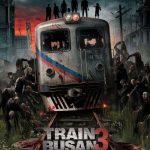The Boy in the Striped Pajamas (2008)
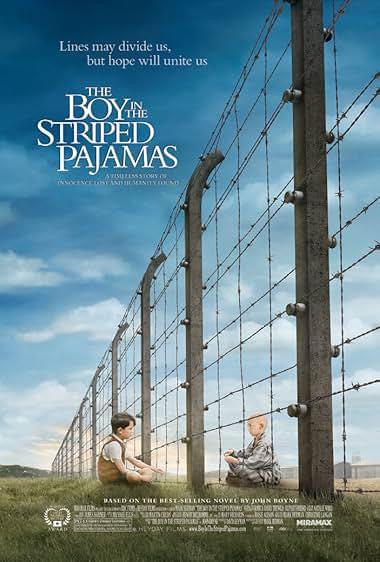
The Boy in the Striped Pajamas (2008), directed by Mark Herman and based on John Boyne’s novel, is a deeply poignant and emotionally charged film that explores the Holocaust through the lens of childhood innocence. The story centers on Bruno (Asa Butterfield), the eight-year-old son of a Nazi commandant, and his friendship with Shmuel (Jack Scanlon), a Jewish boy of the same age who is imprisoned in a concentration camp.
Suggested videos for you:
Plot Overview
Set during World War II, the film begins with Bruno and his family moving from Berlin to the countryside, where his father (David Thewlis) has been assigned to oversee a concentration camp. Bruno, curious and lonely in his new environment, soon discovers what he believes is a farm nearby, though it’s actually the camp. One day, he encounters Shmuel sitting behind an electrified barbed-wire fence. Despite the physical barrier and the unimaginable differences between their lives, the two boys form a secret friendship, meeting regularly to talk and play in their own limited ways.
Through Bruno’s innocent eyes, the horrors of the Holocaust are revealed gradually and indirectly. He is unaware of the true nature of his father’s role, and he sees the camp’s inmates as strange “farmers” wearing striped pajamas. The film contrasts Bruno’s naivety with the brutality of the Nazi regime, highlighting how sheltered and blinded the German public, particularly children, could be to the atrocities happening around them.
Themes and Symbolism
One of the most striking aspects of The Boy in the Striped Pajamas is how it juxtaposes innocence with evil. Bruno and Shmuel’s friendship represents a pure, untainted relationship that defies the propaganda and hatred spread by the Nazi regime. The fence between them is a powerful symbol of division, not only between them physically but also between humanity and inhumanity. Yet, despite the fence, their friendship endures, suggesting that even in the darkest times, there are glimmers of hope and humanity.
The movie also tackles the theme of indoctrination. Bruno’s father and mother (Vera Farmiga) are complicit in the Holocaust, though they experience different degrees of awareness and guilt. While Bruno’s father is a staunch supporter of Nazi ideology, his mother becomes increasingly uncomfortable as she learns more about what is happening at the camp. Bruno, on the other hand, is at an age where he cannot fully comprehend the implications of his father’s job, but his natural curiosity and compassion for Shmuel challenge the worldview imposed on him.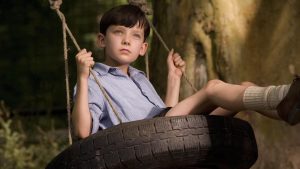
Performances
Asa Butterfield, in his breakout role as Bruno, delivers a remarkably mature and nuanced performance, capturing the innocence and confusion of a child trying to understand the incomprehensible. His wide-eyed naivety is contrasted sharply with Jack Scanlon’s portrayal of Shmuel, whose haunted expressions reflect the trauma and suffering he endures. Their friendship feels genuine and heartbreaking, making the film’s climax all the more devastating.
David Thewlis is chilling as Bruno’s father, a man who is both a loving family man and a cold-blooded officer willing to oversee mass murder. Vera Farmiga, as Bruno’s mother, provides a moral counterpoint to her husband, grappling with the dawning realization of the horror surrounding them. Her emotional breakdown as the truth becomes inescapable adds a layer of tragic complexity to the family dynamic.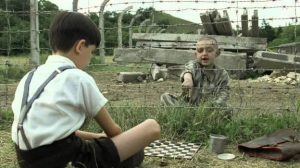
Cinematography and Direction
Mark Herman’s direction is subtle, allowing the story to unfold through the eyes of Bruno without heavy-handed moralizing. The film’s visual style emphasizes the contrast between the idyllic, almost pastoral setting of Bruno’s home and the grim, gray world of the concentration camp. The use of muted colors within the camp, especially the striped uniforms, creates a visual divide between the innocence of childhood and the atrocities of war.
Herman’s decision to keep much of the violence and suffering off-screen adds to the film’s impact, forcing the audience to imagine the horrors that Bruno cannot see or understand. This restraint makes the film more accessible for younger viewers, though the emotional weight of the subject matter remains profound and unsettling.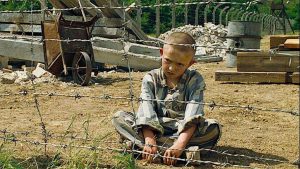
Criticism
While The Boy in the Striped Pajamas has been praised for its emotional depth and powerful performances, it has also been the subject of criticism, particularly from historians and educators. Some argue that the film presents an unrealistic portrayal of concentration camps and downplays the cruelty and dehumanization that Jewish prisoners faced. Critics also note that the story’s focus on a German child rather than the victims of the Holocaust can obscure the true horrors experienced by millions of Jews.
Additionally, the film’s ending, while tragic, has been criticized for seeming contrived or overly sentimental. Without giving away too much, the final moments rely on a coincidence that, while effective in terms of narrative impact, stretches believability for some viewers.
Conclusion
The Boy in the Striped Pajamas is an emotionally powerful film that explores complex themes of innocence, guilt, and the impact of war on children. While it is not without its flaws, particularly in its historical accuracy, the movie succeeds in portraying the Holocaust through a unique and heartbreaking lens. Its central friendship between Bruno and Shmuel serves as a poignant reminder of the shared humanity that can transcend even the most insidious ideologies.
The film’s combination of strong performances, sensitive direction, and moral complexity makes it a haunting and unforgettable viewing experience. However, it should be approached with an understanding of its limitations in representing historical reality, and viewed as a springboard for deeper conversations about the Holocaust, rather than a definitive depiction of it.






